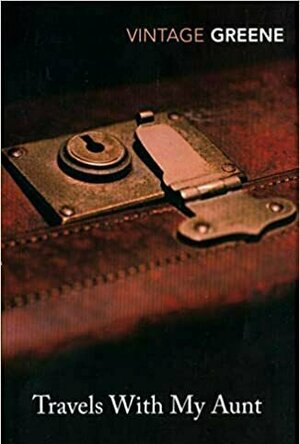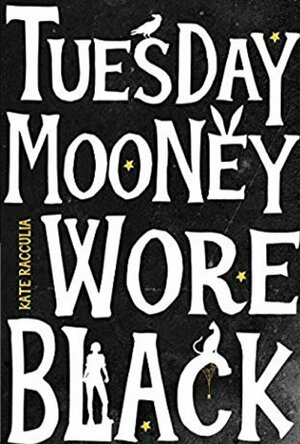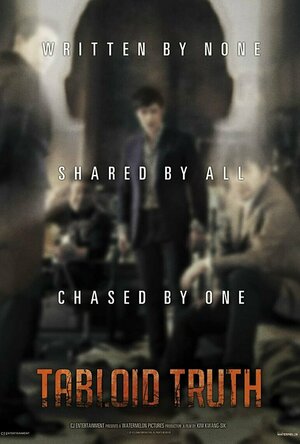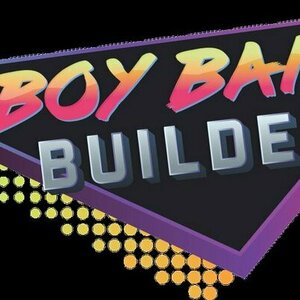
Travels With My Aunt
Book
Henry Pulling, a retired bank manager, meets his septuagenarian Aunt Augusta for the first time in...

Tuesday Mooney Wore Black
Book
You are cordially invited to play a game… Tuesday Mooney loves a puzzle. So when an eccentric...

Fear the Worst
Book
Sydney Blake’s summer is shaping up to be typical for a teenager: she’s spending it with her...

Murder on Moon Trek 1
Book
When space academy dropout Sylvia Stryker hacks her way into the position of Uniform Inventory...

The IT Crowd
TV Show
The IT Crowd is a British sitcom produced by Channel 4, written by Graham Linehan, produced by Ash...

The Dinner Lady Detectives
Book
Margery and Clementine are enjoying a peaceful middle-age together in the small, idyllic town of...

Tabloid Truth (2014)
Movie
A promising young actress takes her own life after a scandal erupts over her relationship with a...
Tales from the Gas Station Volume 2
Book
Nightshift clerk and high-functioning insomniac Jack is back to work, trying his best to keep out of...

Tales from the Gas Staion Volume 2
Book
Nightshift clerk and high-functioning insomniac Jack is back to work, trying his best to keep out of...
Purple Phoenix Games (2266 KP) rated Boy Band Builder: The Card Game in Tabletop Games
Dec 21, 2021
Boy Band Builder (BBB from here out) is a card drafting and band-building game for two to four players. In it, players are band managers tasked with creating the next big group of talented and attractive boys, with the winner of the game being they who earn the most money from assembling the best band and playing the most lucrative gigs.
DISCLAIMER: We were provided a copy of this game for the purposes of this review. This is a retail copy of the game, so what you see in these photos is exactly what would be received in your box. I do not intend to cover every single rule included in the rulebook, but will describe the overall game flow and major rule set so that our readers may get a sense of how the game plays. For more in depth rules, you may purchase a copy online or from your FLGS. -T
To setup, separate the cards by type and shuffle each stack independently. The Gigs deck is placed on the table with four Gigs displayed from the top of the deck. The Artists and Star decks are placed on the table and each player is dealt three Star cards to start the game. It is now setup and managers are ready to build bands… of boys!
BBB is played over a series of rounds, where each player will take two actions each turn. These actions are Audition, Draw Star Cards, Play a Star Card, and Do a Gig. When a manager Auditions boys for the band, they draw the top three Artist cards, choose one to add to their band, and then discard the rest to the bottom of the deck. The cost to add the boy to the band is shown in the upper right hand corner and represents the number of Star cards to be discarded from hand. Artists are added to band (tableau) and ready to begin rehearsing. At least, I hope they are rehearsing.
Additionally, the active manager may Draw Star Cards to increase their hand. Simply draw two Star cards from the top of the deck. Alternatively, the manager may choose to Play a Star Card for its stats by slipping the card under a boy to increase his level of Pipes, Moves, Heat, or Cool stats (check out the photo below where I went hard on buffing Old Frank).
Finally, if the boy band members currently possess the appropriate amount of stats, the manager may choose to Do a Gig. They choose one of the face-up Gigs cards, take it to their score pile (assuming they possess the correct type and number of stats), and then do a little dance to celebrate a completed Gig. To signify the end of their turn, the active manager draws a Star card and passes to the next player. The game ends once the appropriate number of Gigs have been completed by a manager, as detailed in the rules per number of players. The manager with the highest total of money earned from Gigs cards is the winner, and receives all the Grammy nominations afforded to them.
Components. This is a bunch of cards in a tuckbox. The cards are all fine, but the true hero here is the artwork. I cannot express how much I appreciate the decision to keep the art style modern, and the faces blank. I believe it is mostly due to the fact that all of us who were not in boy bands were all a bit jealous of those who were, but I will publicly state that my official opinion is because these boys don’t really need faces. Body language speaks volumes, and the art style reflects that extremely well. Mad props from me on the artwork.
The gameplay here is very intuitive, even though I had a couple questions that were not made clear in the rulebook. You need Star cards in order to buff Boys so they can do Gigs, and making sure that your band has all the right stats to complete the more profitable Gigs. I believe the game lasts an appropriate amount of time; it does NOT overstay its welcome, which is a huge thing for a filler game such as this. I do wish there were more off-the-wall characters like Old Frank and Lil’Hop, and I also wish the Star cards’ backgrounds were a little more interesting to look at, but the game ultimately looks good and plays well too. There are a few extra surprises to be found in the game that I will let our readers discover, including some Take That card that can hinder opponents.
Boy Band Builder can be super quick and competitive, or can be more leisurely and relaxed. This is a great thing for a cute little card game, and though the theme is something with which I am not at all enamored, a love for boy bands is not required to enjoy Boy Band Builder. I can see myself breaking this out with the right people, but I don’t necessarily foresee having this on stand-by for every game night. If you are in the market for a uniquely-themed card game you can chair dance while playing, then check out Boy Band Builder. It can be found on the Amazon store by clicking this link. Enjoy!

